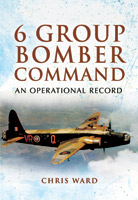Dambusters: The Forging of a Legend (Paperback)
617 Squadron in World War II
Imprint: Pen & Sword Aviation
Pages: 298
Illustrations: 120
ISBN: 9781526726759
Published: 30th July 2018
(click here for international delivery rates)
Order within the next 42 minutes to get your order processed the next working day!
Need a currency converter? Check XE.com for live rates
617 Squadron of 5 Group RAF Bomber Command was without doubt the most famous RAF Squadron in World War II. It was formed to carry out the precision low-level attack on the Möhne, Eder and Sorpe Dams, using Barnes Wallis's newly developed rotating mine, now commonly referred to as ‘The Bouncing Bomb’. The raid was a tremendous success, although costly to the squadron, and proved to be a great morale booster for the war-weary British public. Guy Gibson VC was tasked with organising the formation and training of the new squadron and the Dambusters have been national heroes ever since. Although many books have explored this epic adventure previously, this publication offers fresh perspectives on the long and envious history of 617, from their very first raid until the end of the war.
This retelling of the Dams raid pays particular attention to timings. It is often easy to overlook the fact that this was a complex three-phase operation, spanning 8 hours and 47 minutes, with action occurring simultaneously at widely dispersed locations. The book also attempts to settle, once and for all, the circumstances of the losses, by examining the testimony of eyewitnesses on both sides. Previous accounts can be criticised for being contradictory or at variance; here, efforts have been made to present arguments in such a way as to help readers decide for themselves what actually happened.
In the later war years, 617 suffered greatly during an attack on the Dortmund-Ems Canal, but they recovered. Their list of prioritised special targets went on to include Hamburg, the German missile research plant at Peenemünde, the U boat pens at La Pallice and the sinking of the battleship Tirpitz. The legendary Leonard Cheshire VC led the Squadron for much of that period. Contained within this newly researched publication are a host of first-hand accounts from squadron members as well as German and Dutch witnesses who were present at some of the most spectacular raids. These eyewitness accounts help to explain many of the mysterious losses of the Squadron's aircraft. Lengthy appendices contain a Roll of Honour, lists of Commanders, airfields and aircraft, operational statistics and aircraft histories.
A beautiful volume of aeronautical history that, once again, makes us appreciate the quality of British publishing in this specific sector.
STORIA militare, December 2019
About Chris Ward
Chris Ward has been writing about RAF Bomber Command in WW11 since the mid nineties. He began with his highly successful Bomber Command Squadron Profile series of spiral-bound publications. It was during this period that Andreas Wachtel contacted Chris for information for a book he was writing, and the two became the closest of friends, to the extent that they regard each other as family. When Chris began working on his first major work, Dambusters, The Definitive History, which was published by Red Kite in 2003, Andreas took on the initial research in Germany and Holland. In this way Chris and Andreas made available to others the Dams raid crash sites of Maudslay and Barlow, which had never previously been identified, and they also publicised the scene of Astell’s crash, which is maintained by a local historian. Through this research Chris was able to correct long-held misconceptions about the circumstances of the crashes.
Chris was the first to research in depth the events of the Dortmund-Ems Canal disaster, which took place four months after the dams. He and Andreas discovered the crash sites of Holden, Allsebrook, Wilson and Divall, which had never previously been identified, let alone documented and surveyed. In 2013 a number of historians in the German town of Nordhorn released a book about the air war as experienced by the local community of Bentheim on Germany’s border with Holland. The inspiration for this book, which is a massive tome involving hundreds of hours of work, was Chris’s account of Holden’s crash on the farm of the Hood family, which resulted not only in the deaths of the eight-man Lancaster crew, including four members of Guy Gibson’s Dams crew, but also Frau Hood. 70 years to the day after this tragedy, on Sunday 15th September 2013, Chris and Andreas were guests of honour at a civic reception in Nordhorn to release the book. There was also a ceremony at the crash site beside the Hood farmyard, attended by the whole local Hood family, local dignitaries, the authors of the book and many interested spectators.
Another Chris Ward first was his enquiry into the events on the German side during the final attack by 617 and 9 Squadrons on the Tirpitz in a Norwegian fjord in November 1944. Kurt Schulze, who was a pilot on the nearby fighter airfield at Bardufoss at the time, sent Chris a copy of the transcripts of the German Courts Martial, which took place six weeks after the loss of Tirpitz to apportion blame. Chris translated them, and devoted an entire chapter in his original book and the P&S update to the reasons behind the German failure to intercept the approaching Lancaster force.
Chris has since worked on a series of books for P&S detailing the histories of the bomber groups. Those on 3, 4, 5 and 6 Groups have just been joined by his latest, 1 Group. He is currently working on an updated series of Bomber Command Squadron Profiles, which P&S have undertaken to publish in hardback.




















